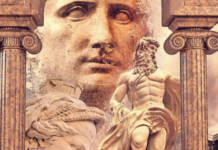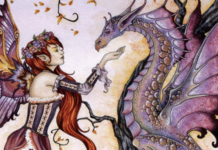
 Nature Spirituality from the Ground Up: Connect with Totems in Your Ecosystem, by Lupa
Nature Spirituality from the Ground Up: Connect with Totems in Your Ecosystem, by Lupa
Llewellyn Worldwide, 978-0-7387-4704-0 269, pp. (incl. appendices, glossary, bibliography, and index), 2016
Lupa is a white American author who is very clear about working with the language of totems on her own terms, and not appropriating Indigenous practices. This is a book written for people who are attracted to the idea of Paganism as nature spirituality and who don’t really know what to do to either express, honour or otherwise interact with the “nature” part of that. We modern humans are all too often alienated from our own nature, and from a sense of connection with what’s around us — Nature Spirituality from the Ground Up: Connect with Totems in Your Ecosystem offers many tools for reconnection and “re-wilding” yourself, no matter where you live.
This is an introductory text that is not condescending, and has plenty to offer the more experienced practitioner. It’s beautifully non-dogmatic, with the ongoing refrain of “do what works” and regular re-giftings of permission to play with the ideas on offer. It’s not a how-to book, more a set of tools to work with on your own terms. Lupa suggests wealth of meditation tools, but there are more in-the-world options as well, including powerful ideas around map-making and map use, and suggestions on how to physically interact with your environment.
It’s also not a “meanings” book, which I greatly appreciate. I struggle with books on any subject that ascribe fixed symbolic meanings to anything at all. Meanings are subjective, as Lupa points out — her example here is that what a dog means to you is going to depend on your experience of dogs. If you’ve been attacked by a dog, you’re not going to see a dog as a representative of loyalty and friendship!
Totems are often associated with creatures — and high profile, glamorous creatures at that. I love the way Lupa opens up the experienced world as a source of totemic inspiration. It doesn’t have to be all bears and eagles. It’s not about the perceived kudos your totem gives you, but about how you work with them, for their benefit as well as for your own. I particularly enjoyed the inclusion of fungi as potential totem beings — a much overlooked world and a vital part of the life of the soil. Nothing is too small, or obscure to be revered.
I greatly appreciated her idea that working with totems is not a human-centric practice. It’s not about what we can take from nature, but how we become active participants in our own environments. I am excited about the way Lupa advocates for connecting deeply with the place you live; learning to see nature in urban spaces, and working with the seasons you experience rather than doggedly sticking to the Wheel of the Year. This is a Paganism rooted in lived experience, and, having been banging on about alternative wheels and nature as something present, not exotic, I found it deeply affirming to read.
There’s a great deal of care and attention to audience gone into this book. Lupa considers the needs of diverse people in different economic, geographical and personal situations. She advocates a responsible attitude to the land and educates readers in how to give back in a meaningful way. She has much to say around issues of respect and appropriation, it falls to avoid, and assumptions to steer clear of. This is very much a book that promotes conscious engagement, thinking spirituality, and self-education as well as offering a solid ethical approach.
I very much appreciate the way that natural history, biology, geology, and so forth are brought into the mix as great additions to spiritual study. It doesn’t have to be either or. We can be thinking, feeling, rational spiritual beings. We can appreciate the magical awe of the physical reality we inhabit. We can learn by reading, and by doing, by being present, and by interacting.
Guided meditation is an oft-used method for building deeper relationships with totems in this book. It cheers me greatly to see meditation offered as something we can do creatively and to make connections. So much of contemporary Pagan meditation writing focuses on stilling the thoughts and emptying the mind, but I believe there is so much more we can do with our brains when in a meditative state. For anyone looking for creative meditative opportunities to enhance their practice, this is a book well-worth reading.
For example, a typical guided meditation from most teaching books will tell you what happens, down to the conversations you might have while in a meditative state. Rather than do this, Lupa offers “openings” that will take you into a place of possibility, and then if something turns up in your meditation, you have to have your own conversation with it, on your own terms, with no guarantees about the outcome. That strikes me as being much more exciting and makes room for genuine spiritual experience far beyond anything you can get by following a script.
You don’t have to be a beginner to appreciate Nature Spirituality from the Ground Up: Connect with Totems in Your Ecosystem. You don’t even have to find the concept of totems relevant to your practice to draw a great deal of inspiration from this book. It’s a natural fit for Druids, but I think Pagans of all paths will find it relevant. I tend to think in terms of spirits of place, in a more animist way, and as such I’m not likely to take up a totemic practice, but even so, I learned valuable things from this book that I will take forward into my life. Highly recommended.








